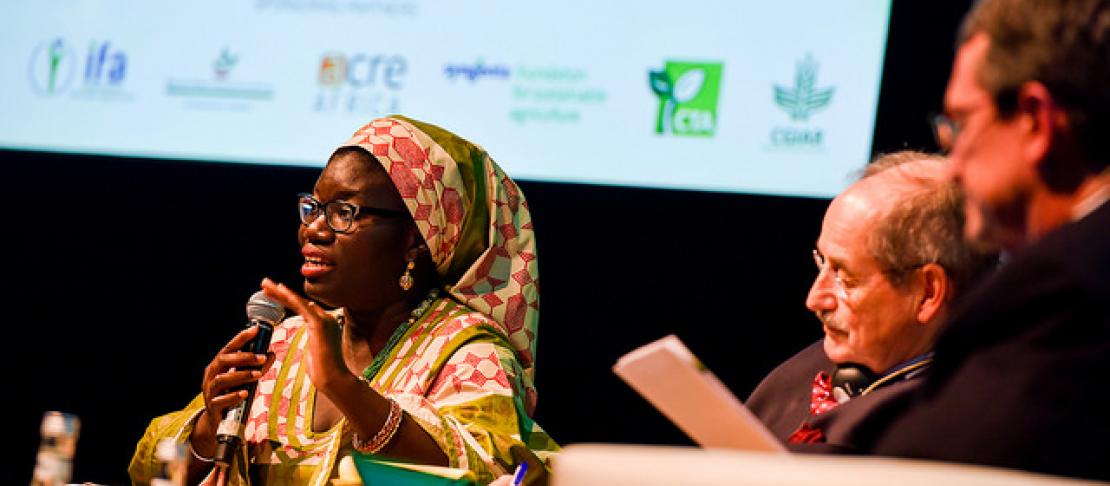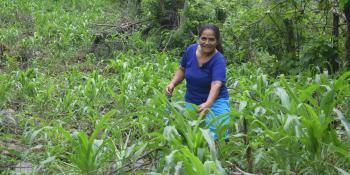Gender Action Plan aims to integrate gender into climate change policies and strategies

Gender Action Plan strives to increase the number of women leaders and broaden their role in the development of climate change policy.
Deliberations on key elements of a Gender Action Plan (GAP) recently took place during the forty-sixth Subsidiary of Body Implementation (SB46). Over the course of a two day, in-session workshop, gender and climate change negotiators and experts discussed key elements of the GAP, which was one of the article adopted by parties during the United Nations Framework Convention on Climate Change (UNFCCC) decision. The decision, reached at the 22nd Congress of Parties (COP22) in Marrakech Morocco, extended the Lima Work Plan on Gender for three years, until 2019.
Delegates proposed elements of the GAP aimed at ensuring the integration of gender into climate change policies and increasing the participation of women at national and global intergovernmental fora. The proposed GAP specifies how parties and the UNFCCC will promote gender equality across all of the organization’s work at the global, regional, and country levels.
Five key clusters of the proposed GAP are:
- Capacity building, knowledge sharing and communication
- Gender balance, participation and women’s leadership
- Coherence within the UNFCCC and other UN agencies
- Gender-responsive implementation and Means of Implementation (MoI)
- Monitoring and reporting
Strengthening capacity in gender-responsive climate change policymaking
The workshop stressed the importance of including a gender perspective in climate change programs and plans, as well as national and regional development. Achieving this depends on training and building a cadre of gender experts on gender-responsive policy, planning, and programming at national levels. The African Working Group on Gender and Climate Change (AWGGCC) has already started training policymakers on gender-responsive climate change policy. For example, AWGGCC and Kenya’s Ministry of Environment and Natural Resources in partnership Kenya’s National Gender and Equality Commission and the CGIAR Research Program on Climate Change, Agriculture and Food Security (CCAFS) recently trained about 90 Kenyan policy makers at the national and sub-national levels on gender-responsive climate change policymaking.
Of importance to CCAFS and its research partners is the undertaking of research to generate good practices (i.e. gender-responsive practices) and developing knowledge products on gender and climate change to share and communicate with parties at national, regional, and international workshops. CCAFS and its partners can also provide expertise on collection, analysis, and use of sex-disaggregated national and local data. Furthermore, CCAFS and its partners can support countries that do not have gender data in developing and using gender data collection tools and methods and building gender databases that can be updated biannually.
The delegates called for the use of gender indicators in the monitoring and evaluation (M&E) of adaptation and mitigation actions as part of their national communications plans and programs (NDCs, NAPs, REDD+ etc). This will ensure that appropriate actions are targeted to women, youth and other vulnerable groups. Additionally, parties can hold knowledge exchange events on M&E of gender mandates.
Planning for gender-responsive climate change actions
As countries gear up to develop and implement adaptation and mitigation climate change actions, gender negotiators that fail to recognize, research, and include women’s contributions to these actions will lead to further increases in women’s vulnerabilities and gender inequities. Research has shown that investment in women’s agricultural activities in the developing world can increase food production by 10 to 14 percent. Additionally, mitigation actions such as cleaner and more efficient energy technologies for cooking will reduce emissions. Delegates during the workshops stressed the importance of developing and planning for gender-responsive climate change actions, including financing that can not only increase women’s adaptive capacity but achieve national and global sustainable development.
50 percent gender representation at UNFCCC and other fora
The promotion of gender balance and participation is also central to the mandate of the UNFCCC. In order to achieve the positive results of increased women’s participation, especially from indigenous groups, the UNFCCC realizes that it is essential to address the current participation inequalities that exist amongst the delegates, at various levels. The limited number of women involved in decision making at national levels remains prevalent. In developing countries, gender inequalities in participation is often increased, leading to increased exacerbations of the negative impacts on climate change decisions. GAP proposes a 50 percent representation of women in all Party delegations and constituted bodies under the UNFCCC by 2019. By mid-May, eleven submissions were completed from various parties and potential elements to enhance work on gender and climate change were drafted, including capacity building and training opportunities, awareness-raising and gender balance, monitoring and evaluation, adaptation, mitigation, finance, data generation and information sharing among others.
Further reading:
- More information on the submissions: UNFCCC SBI46 Submission on GAP
- Blog: Africa advancing and augmenting the UNFCCC Lima Work Programme on Gender
- Publication: Gender Equality in National Climate Action: Planning for Gender-Responsive Nationally Determined Contributions
Mary Nyasimi is Science Officer with the CCAFS Gender and Social Inclusion Flagship.



